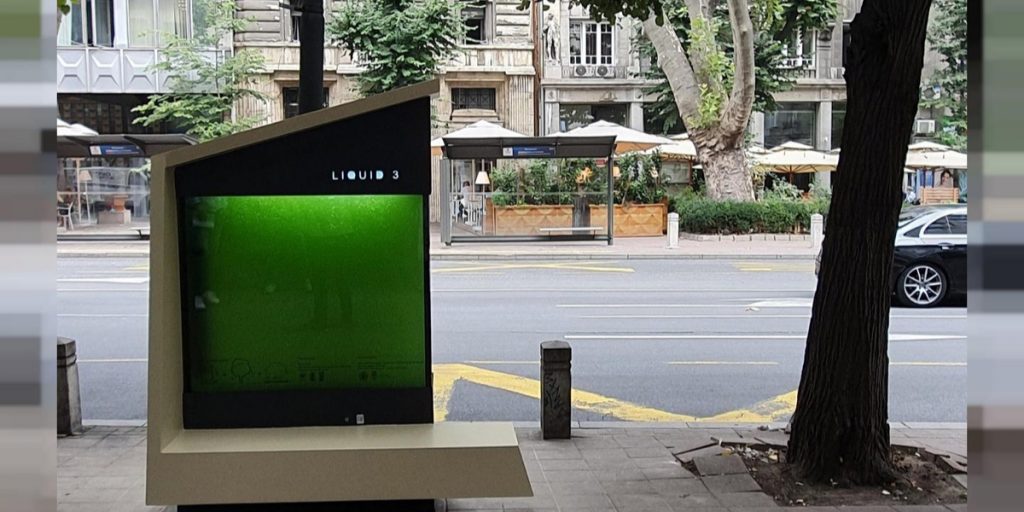
GUEST POST from Art Inteligencia
Innovation has become the driving force behind progress in today’s world. From cutting-edge technologies to groundbreaking scientific discoveries, we are continuously witnessing the power of human ingenuity. However, amidst all the revolutionary advancements, it is essential to question what truly defines innovation. Do we only consider groundbreaking and high-tech inventions as innovative? Or can innovation be found in something as simple as nature itself?
One such marvel of nature that challenges our perception of innovation is the concept of liquid trees. Unlike traditional trees, liquid trees are not rooted in the ground, nor do they possess a solid structure. Instead, they are composed of water particles suspended in the air, forming swirling, fluid-like formations. And while this might seem like a whimsical notion, it holds the potential to revolutionize our understanding of sustainability and environmental conservation.
Liquid trees, also known as aeroplankton or aeroplanktic organisms, are a prominent example of biomimicry – the imitation of nature’s designs to solve human problems. By emulating the way these organisms harness air and water for sustenance, we can develop innovative solutions for resource management and energy production.
One of the most striking aspects of liquid trees is their ability to extract moisture from the atmosphere. Just like traditional trees draw water from the ground through their roots, these ethereal counterparts can collect airborne water particles and convert them into a usable form. This unique trait makes liquid trees a potential solution for regions facing water scarcity.
Imagine a world where buildings are equipped with liquid tree-inspired systems that capture and condense atmospheric water vapor, providing a sustainable source of freshwater. Not only would this technology alleviate the pressure on depleted groundwater reserves but it would also reduce our carbon footprint by eliminating the need for energy-intensive water treatment processes.
Aeroplankton also holds promise in the realm of renewable energy. The flow and circulation of air around liquid trees are akin to those in wind turbines, presenting an opportunity for wind energy innovation. By mimicking the dynamics of these floating organisms, we can design wind turbines that are more efficient and less intrusive to the environment. Imagine harnessing clean energy from the gentle swaying of these ethereal structures, without the need for expansive wind farms blotting the landscape.
Moreover, liquid trees can serve as a reminder of the beauty and resilience found in nature. In an increasingly urbanized world, where concrete jungles replace lush green forests, we often lose sight of the wonders around us. The concept of liquid trees challenges us to appreciate the elegance and adaptability of nature’s designs and incorporate them into our own technological advancements.
Innovation is not limited to high-tech gadgets or intricate algorithms. It encompasses any creative solution that pushes the boundaries of what we perceive as possible. Liquid trees serve as a humbling reminder that sometimes the most ingenious ideas can be found in the simplest of forms.
As we strive for sustainable solutions and progress towards a greener future, let us not overlook the lessons nature has to offer. By embracing the concept of liquid trees and exploring its applications, we can redefine innovation and lead the way towards a more harmonious coexistence with our environment. After all, the true test of innovation lies in our ability to find inspiration in the natural world and create something truly extraordinary.
But There is Another Kind of Liquid Tree
Innovation continues to surprise us with extraordinary ideas that challenge our perception of what is possible. One such remarkable innovation in the field of sustainability is the Liquid 3 photo-bioreactor. Drawing inspiration from liquid trees and biomimicry, these photo-bioreactors take the concept of harnessing renewable energy from nature to new heights.
Liquid 3 photo-bioreactors, also known as algae bioreactors, capitalize on the remarkable ability of photosynthetic microorganisms to convert sunlight and carbon dioxide into valuable products, including biofuels and high-protein biomass. These bioreactors consist of transparent acrylic tubes filled with a suspension of algae, which are then immersed in a liquid medium.
The process of photosynthesis takes place within the tubes as sunlight penetrates, providing energy for the algae to drive their growth. Depending on the specific intent, the algae can be engineered to produce specific compounds or simply utilized to capture and store carbon dioxide from the atmosphere, reducing greenhouse gas emissions.
One of the most significant advantages of Liquid 3 photo-bioreactors is their efficiency in converting sunlight into energy. Unlike traditional biofuel production methods, which require vast land areas for growing crops like corn or sugarcane, these bioreactors can be installed in smaller spaces, such as urban rooftops or alongside buildings’ exteriors. This vertical integration allows for the absorption of sunlight from various angles, optimizing energy capture.
Furthermore, Liquid 3 photo-bioreactors have shown impressive productivity compared to traditional crop-based systems. Algae in these bioreactors can multiply rapidly, thanks to their highly efficient nutrient absorption and growth rates, resulting in higher yields of valuable biomass. Additionally, algae cultivation does not compete with food crops for arable land, making it a sustainable alternative for biofuel and food production.
The potential applications for Liquid 3 photo-bioreactors extend beyond energy production. They have shown promise in wastewater treatment, where algae can effectively remove pollutants and excess nutrients from water bodies. This approach not only cleanses the water but also turns a waste product into a valuable resource, as the harvested algae can be further processed for various applications, including fertilizer production or bioplastics.
Liquid 3 photo-bioreactors emphasize the interconnectedness between sustainable energy production, environmental stewardship, and economic benefits. By utilizing these bioreactors, we can reduce our reliance on fossil fuels, mitigate climate change by capturing carbon dioxide, and generate valuable by-products that contribute to a circular economy.
As with any innovation, there are challenges to overcome. Scaling up the production and implementation of Liquid 3 photo-bioreactors remains an area of active research and development. Identifying the ideal algae strains for maximum productivity, optimizing the system’s design and operational parameters, and ensuring cost-effectiveness are all key factors to consider.
However, the potential benefits far outweigh the challenges. Liquid 3 photo-bioreactors offer a promising solution to the pressing global issues of energy sustainability, carbon emissions, and waste management. By embracing this innovative approach, we can make substantial progress towards a greener and more sustainable future.
In conclusion, Liquid 3 photo-bioreactors intertwine the principles of biomimicry, renewable energy, and circular economy. By emulating the efficiency of natural photosynthesis, these bioreactors bring us closer to achieving a harmonious and sustainable coexistence with our environment – absorbing carbon dioxide and adding oxygen to urban centers equivalent to the impact of two ten-year old trees. As we continue to explore and develop these remarkable technologies, let us remain open to the lessons nature has to offer, using innovation as a catalyst for positive change.
It will be interesting to see whether either of these types of liquid trees catch on. I guess only time will tell.
So, what do you think? Innovation or not?
Image credit: Liquid 3


 Quality used to mean something to companies.
Quality used to mean something to companies. There was a temporary consumer revolt decades ago that resulted in companies pretending that quality was more important than profits, but it didn’t last long. In the end, Americans accepted the decline in quality as outsourcing and globalization led to declining prices (and of course higher profits) and fewer goods carrying the “Made in the USA” label, quickly replaced by Japan, China, Mexico, Vietnam, Bangladesh and the rest.
There was a temporary consumer revolt decades ago that resulted in companies pretending that quality was more important than profits, but it didn’t last long. In the end, Americans accepted the decline in quality as outsourcing and globalization led to declining prices (and of course higher profits) and fewer goods carrying the “Made in the USA” label, quickly replaced by Japan, China, Mexico, Vietnam, Bangladesh and the rest. Around the turn of the century we had the birth of the
Around the turn of the century we had the birth of the  Toyota calls this “uppgrading” and defines it as retrofitting safety and convenience functions, like blind spot monitoring, emergency braking assist, rear cross-traffic alert, and the addition of a hands-free tailgate or trunk lid. Remodeling will also be an option and will include replacing worn or damaged parts inside and out, such as the upholstery, the seat cushions, and the steering wheel.
Toyota calls this “uppgrading” and defines it as retrofitting safety and convenience functions, like blind spot monitoring, emergency braking assist, rear cross-traffic alert, and the addition of a hands-free tailgate or trunk lid. Remodeling will also be an option and will include replacing worn or damaged parts inside and out, such as the upholstery, the seat cushions, and the steering wheel.

 Now that I’ve got your attention, let’s talk about homosexuality and whether it has any impact on innovation. There probably are two no more polarizing topics in the United States than homosexuality and abortion. But the truth is that if both sides of the political and religious spectrum focused on the
Now that I’ve got your attention, let’s talk about homosexuality and whether it has any impact on innovation. There probably are two no more polarizing topics in the United States than homosexuality and abortion. But the truth is that if both sides of the political and religious spectrum focused on the